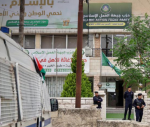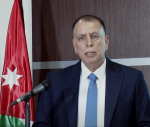You are here
On heroes and preachers: Gaza’s new resistance paradigm
Aug 05,2014 - Last updated at Aug 05,2014
“Where is the Palestinian Gandhi? In Israeli prison, of course!” was the title of an article by Jo Ehrlich published in Modoweiss.net on December 21, 2009. That was almost exactly one year after Israel concluded a major war against Gaza. The so-called Operation Cast Lead (December 27, 2008 – January 18, 2009) was, till then, the deadliest Israeli attack against the impoverished strip for many years.
Ehrlich was not in the least being belittling by raising the question about the “Palestinian Gandhi” but responding to the patronisation of others. Right from the onset, he remarked: “Not that I’m in any way playing into the Palestinian Gandhi dialogue, I think it’s actually pretty diversionary/racist. But sometimes you have to laugh in order not to cry.”
Indeed, the question was, and remains, condescending, ignorant, patronising and utterly racist. But the question was also pervasive, including among people who classify themselves as “pro-Palestinian activists”.
Now that Israel’s latest war — so-called Operation Protective Edge — has surpassed Cast Lead, in terms of duration, causalties and level of destruction, but also the sheer horrendousness of its targeting of civilians, as dozens of families were entirely wiped out — the Gandhi question seems more muted than usual. To understand why, one needs to first examine the reason why Palestinians were asked to produce a non-violent Gandhi alternative in their struggle for freedom in the first place.
The Second Palestinian Intifada or uprising (2000-2005) was inaugurated with an extremely violent Israeli response. Israeli leaders at the time meant to send a message to late Palestinian leader Yasser Arafat that they had no patience for any act of collective defiance, as they were convinced that Arafat engineered the Intifada to strengthen his political possession in the “peace talks”, which ultimately proved a farce.
Caught in an impossible situation — a massive US-fed Israeli war machine that harvested hundreds of lives every month — and having no faith in their leadership, Palestinians resorted to arms, using suicide bombings as well as other violent methods. The tactic raised much controversy — due to the death toll among Israeli civilians — and was quickly used in Israel-Western propaganda to retrospectively explain Israel’s military occupation, and justify its harsh military tactics.
Those who dared explain Palestinian violence within its proper and larger context, or underscore that many more Palestinian civilians were still being killed by the Israeli army, were shunned by the media, and, at times, were seen as a liability by those who insisted on classifying Palestinians within a narrative of victimisation.
Many Westerners (from presidents and philosophers, to journalists and social media activists) deliberated the matter with much enthusiasm. The fact that few Western countries have truly experienced anti-colonial national liberation struggles in their modern history, thus lacking real understanding of the humiliation and anger experienced by colonised nations, seemed to matter little. Some were simply concerned about Israel, and no one else; others wanted to preserve the image of the Palestinian as an occupied, hapless, eternal victim.
The most obscene presentation of this language was made by then-newly elected US President Barack Obama, who stood at a Cairo university podium on June 4, 2009, to convey to Palestinians a most denigrating, insensitive and highly inaccurate message:
“Palestinians must abandon violence. Resistance through violence and killing is wrong and it does not succeed. For centuries, black people in America suffered the lash of the whip as slaves and the humiliation of segregation. But it was not violence that won full and equal rights. This same story can be told by people from South Africa to South Asia; from Eastern Europe to Indonesia. It’s a story with a simple truth: that violence is a dead end.”
Obama’s message painted the Palestinian struggle as an abnormality in otherwise perfectly peaceful national liberation struggles around the world. The message is of course untrue. Moreover, he either didn’t know or wished to ignore Palestinian history where popular, nonviolent resistance goes back to the 1920s and 30s, and arguably, earlier than that. Obama, like many others, failed to appreciate the level of extreme Israeli violence, which employs weapons that the US supplied Tel Aviv, to subdue Palestinian resistance and maintain a relatively easy military occupation and thriving Jewish settlements built illegally on stolen Palestinian land.
But the decisive point in the discussion was the Second Intifada, which wrought much Israeli violence resulting in the death of thousands. The political implications of the uprising were also quite significant as it divided Palestinians between those who were intimidated into submission by the Israeli tactics (the so-called moderates), and others who seemed unrepentant (the so-called radicals).
For nearly 10 years now, the debate has raged. Some outrightly condemned Palestinian armed resistance; others offered mutual criticism of Israeli and Hamas violence, while another group simply preached about the futility of armed struggle against a country with nuclear weapons capable of blowing up much of the globe with the push of a button.
That debate, although made for an exquisite discussion on online newspapers and social media, hardly registered amongst ordinary Palestinians, especially those in Gaza. While Gaza intellectuals did contend with new ideas of how to build international solidarity to end the Israeli siege, get their message out to the world, and even question the timing of firing rockets into Israel, few probed the principle of armed resistance.
Of course, Palestinians know best. They know that collective resistance is not always a tactic determined through social media discussions; that when one’s children are pulverised by US-supplied killing technology, there is no time to lie flat and sing “we shall overcome”, but to prevent the rest of the tanks from entering into the neighbourhood — be it Shejaiya, Jabaliya or Maghazi. They also know that Israeli violence is a result of a decided political agenda, and not tailored around the nature of Palestinian resistance. But more importantly, history has taught them that when Israelis come to Gaza as invaders, few will stand in Gaza’s defence before the Western-financed death machine, but Gaza’s own sons and daughters. If Gazans don’t defend their cities, no one else will.
Although the disparity of the fight between Israel and Palestinian resistance is as highlighted today as ever before, the resistance has matured. The fact that they killed dozens of soldiers and only three civilians should be noted, as well as Israel’s disgraceful targeting of hospitals, schools, UN shelters and even graveyards. Maintaining that level of discipline in the most unequal fight one can imagine is as close to the very battlefield ethics that the US and Israel often breach, but never, ever respect.
As great as Gandhi was in the context of his country’s struggle against colonialism, which remains a source of inspiration for many Palestinians, Palestine has its own heroes — women and men who are engraving a legend of their own in Gaza and the rest of Palestine.
As for those who have busily asked the question of where the Palestinian Gandhi is, it is much more effective for them to use their energies to block their governments’ shipments of weapons to Israel, which has so far killed over 1,800 Gazans and wounded over 8,000, a vast majority of them civilians.
The writer, managing editor of Middle East Eye, is an internationally syndicated columnist, a media consultant, an author and the founder of PalestineChronicle.com. His latest book is “My Father Was a Freedom Fighter: Gaza’s Untold Story” (Pluto Press, London). He contributed this article to The Jordan Times.













